SHINING A LIGHT IN THE DARK

Picking through a murky market outlook for the rest of 2025


Picking through a murky market outlook for the rest of 2025

At Aberdeen Equity Income Trust we see the combination of still-cheap valuations for UK stocks and any signs of a pick-up in economic activity as a powerful opportunity.
We scour the market for UK companies of all sizes with both low valuations and positive earnings momentum as we go about identifying our best ideas.
So, if you’re looking for a diversified UK portfolio with potential to deliver above-average income as well as real growth in both capital and income, Aberdeen Equity Income Trust may be a good choice for you.
Please remember, the value of shares and the income from them can go down as well as up and you may get back less than the amount invested.
Tax treatment depends on the individual circumstances of each investor and may be subject to change in the future.
Eligible for Individual Savings Accounts (ISAs) and Self-Invested Personal Pensions (SIPPs).
Invest via leading platforms.




S&P 500 and Nasdaq hit new highs after best quarter in more than a year
07 Mystery ‘whale’ seeds JPMorgan’s first actively managed high yield bond ETF
Nvidia stock strikes new alltime high 09 London’s most senior index, the FT30, turns 90 this week
Rank hits the jackpot after government relaxes gaming rules 10 Wizz Air shares hit year-low as headwinds continue to grow
Can Vistry finally put its ‘annus horribilus’ behind it?
Cintas on a roll going into final quarter results


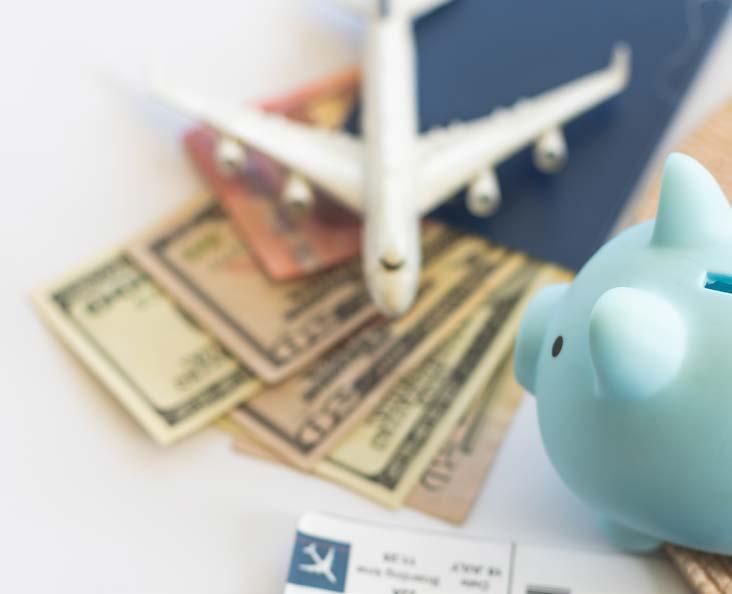

Can marketone-time


The first half of this year has been full of ‘sound and fury’ as stocks have slumped on the potential disruption to global trade from Trump’s tariffs and rebounded again to hit record highs, at least in the US. We assess the prospects for the next six months.
Future Group was once a high-flier, but the digital advertiser, magazine title and price comparison website owner seems to have fallen on hard times. Can its new chief executive, the third in as many years, revive the firm’s future without breaking it up?
Did you know that we publish daily news stories on our website as bonus content? These articles do not appear in the magazine so make sure you keep abreast of market activities by visiting our website on a regular basis.
Over the past week we’ve written a variety of news stories online that do not appear in this magazine, including:


Identifying the winners and losers in the small-cap market
This month’s round up includes an AI newcomer, a sports data leaver, a musical instrument seller hitting the high notes and a specialist in personalised promotions struggling with customer cancellations.
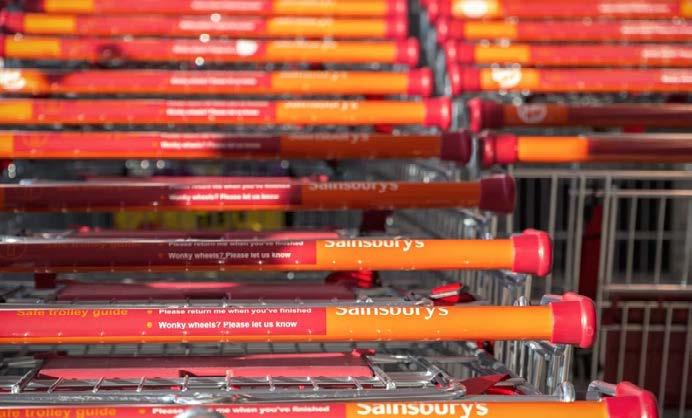
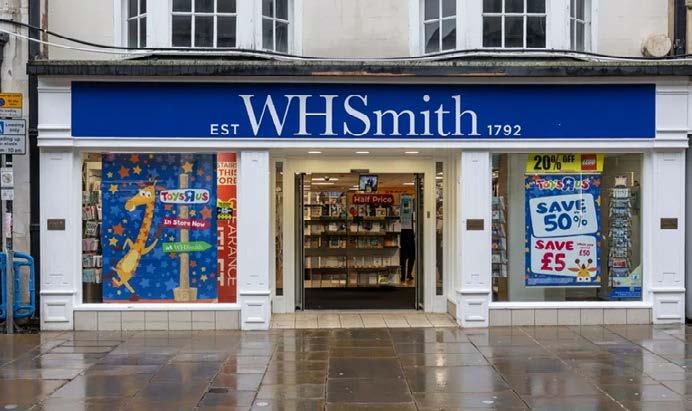

Stocks are living their best life while the dollar is having its worst year since 1973
Risk assets are back with a bang, with the S&P 500 and the Nasdaq Composite closing at record highs on Monday (30 June), after a frantic rally off the lows at the start of the second quarter triggered by ‘Liberation Day’.
The whole idea of introducing swingeing tariffs was to bring countries to the table, yet as we approach the end of the 90-day reprieve the US has done a trade deal of sorts with the UK and tensions with China have de-escalated, but Europe and Japan have yet to acquiesce.
Treasury Secretary Scott Bessent insists that unless countries act before 9 July, there will be a ‘bounce-back’ to the tariffs announced on 2 April.
Yet where is the worry? Why aren’t stocks selling off again? The answer is, investors – and we are mainly talking about US retail investors – are getting more comfortable with ‘buying the dip’, because history tells them it is a winning strategy over the long term.
Meanwhile, the US Senate is pushing through legislation which will add at least another $3.5 trillion to the budget deficit, so why aren’t bond yields blowing out the way they did earlier in the year?
The US 30-year Treasury yield is currently around 4.75%, not 5.15%, because the market knows as soon as Fed chairman Jerome Powell’s term is up next May, the new appointee – quite possibly Bessent – will slash interest rates at the president’s bidding, regardless of where inflation may be at the time.
The strain is being borne entirely by the dollar, which in the space of three months has hit a threeyear low.
Unfortunately, as bond investors know, cutting short-term interest rates doesn’t mean long-term rates will necessarily fall, reducing the interest bill –in fact they can actually rise.
So, while it may look as though risks are contained, due to the lack of volatility, stresses are
S&P 500 index EPS forecasts have been cut not raised this year
Source: S&P, Shares
growing within the market.
That might not be such a problem if stocks weren’t so richly valued, but based on Monday’s closing price the S&P 500 is the most expensive it has been since the internet bubble in 2000, while earnings forecasts are being cut, not raised.
Back in the day, the phrase was ‘There’s an app for that’. Now the phrase is, ‘There’s an ETF for that’, as Martin Gamble reports in his feature on a new activelymanaged high-yield ETF which has been backed by a mysterious ‘whale’ investor to the tune of $2 billion.
And, after celebrating 30 years of AIM recently, this week sees the UK’s oldest stock market indicator turn 90. We look at how the index has evolved since its formation and discover a few rare survivors from the 1930s.




The unknown investor is one of the bank’s largest, most sophisticated institutional clients
At a time when credit spreads are historically tight across the spectrum of duration and quality, it is noteworthy that JPMorgan Asset Management announced the launch of its first actively-managed high-yield bond ETF (exchange traded fund).
High-yield bonds, sometimes referred to as ‘junk bonds’, are usually issued by highly-indebted companies with poor balance sheets, which means they are more financially vulnerable when the economy turns down.
The new fund is set to launch with $2 billion of assets after a ‘mystery’ backer provided the seed money, putting the fund in the top 50 of actively managed bond funds in just a few days.
The fund’s size means it can start life close to fully invested and is able to attract clients who might otherwise have restrictions on the percentage of any fund they can hold.
Finally, as any observer of the asset management industry will attest to, scale tends to beget even greater scale, which is important.
Bloomberg Intelligence senior ETF analyst Eric Balchunas told news reporter Katie Greifeld, ‘Assets are marketing, and if you can get an anchor tenant like that in there, you’re already profitable, by far.’
When asked why the investment firm decided to launch in the high-yield space, chief executive George Gatch pointed to ‘finite’ opportunities in private markets.
‘There’s a lot of money and investors chasing finite opportunities in the private credit market,’ Gatch explained, adding, ‘You also have liquidity trade-offs.’
‘You take those two things in combination and on a marginal basis, I would put my marginal dollar in public high-yield rather than private credit.’
For context, high-yield credit spreads have tightened from 4.6% post ‘Liberation Day’ to
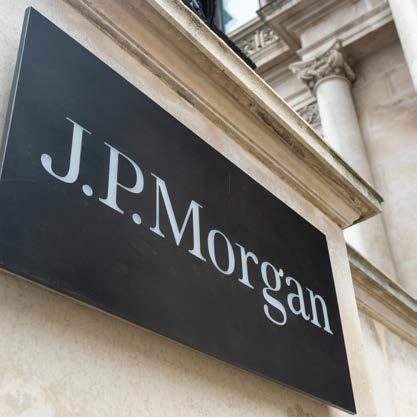
around 3%, one of the tightest levels since the eve of the financial crisis in 2007.
Nevertheless, JPMorgan believes yields are attractive compared to equites while also noting that default rates remain low.
The problem with relative comparisons is that sometimes the underlying asset used for the comparison is itself richly valued, as arguably US stocks are today.
For example, the earnings yield on the S&P 500, as measured by taking the inverse of the PE (price to earnings) ratio recently dipped below the 10year treasury yield for the first time since 2000.
In relation to defaults, it is worth remembering they are cyclical which means tight spreads may expose investors to higher risks should the economy turn down.
The Federal Reserve believes the seemingly relentless demand for private assets may increase credit and liquidity risks for banks.
Fed data shows large banks’ total loan commitments to private equity and credit has ballooned to $300 billion from just $10 billion a decade ago. [MG]
On the last day of June, AI (artificial intelligence) chip design champion
Nvidia (NVDA:NASDAQ) set a new alltime share price high closing at $157.99.
The new record values the company at $3.85 trillion, making it once again the world’s most valuable company, ahead of both Microsoft (MSFT:NASDAQ) at $3.7 trillion and Apple (AAPL:NASDAQ) at $3.06 trillion, the only other listed companies to top the $3 trillion mark.
It also gave sceptics another bloody nose, having risen nearly 70% since a rout in early April when the US president unveiled reciprocal tariffs for trading partners around the world.
During several sessions following Trump’s traderelations bombshell, Nvidia shed close to $270 billion of market cap.
At the time, JPMorgan analyst Harlan Sur wrote in a note that he estimated the trade rules could cause an 8% to 10% drop in Nvidia’s full-year data centre revenue and EPS (earnings per share).
In other words, Nvidia would see $15 billion to $16 billion in lost revenue. Jefferies analyst Blayne Curtis was also gloomy, albeit predicting a more modest $10 billion hit to revenue.
Less than three months on, things look very

different, and Nvidia is pushing the $4 trillion market cap mark, which would be a global first.
To do that, the stock price would need to close at $164.15, according to Shares own calculations, just 3.9% above current levels.
Investors optimistic about Nvidia’s medium-term prospects may even believe a $5 trillion valuation is not out of the question later this year or during 2026.
Sceptics will scoff, after all no company has ever been valued at $4 trillion before, let alone $5 trillion, but running the numbers shows the prospect is not as outlandish as it might appear.
Looking at current consensus forecasts for this full year plus the following two years, we calculate analysts are anticipating average annual revenue and EPS growth of around 30% for both metrics over that timeframe, implying an average threeyear PE (price to earnings) ratio of 29.3 times.
The forecasts also imply an average three-year PEG (price to earnings growth) ratio, a metric used by many growth-focused fund managers, of 0.94 times, firmly in the attractive zone.
So, what would the three-year average PE and PEG ratios look like at a $5 trillion market cap? To hit this mark, it would require the stock to rally roughly 30% to $205.
Assuming no changes to forecasts over same period, Shares calculates Nvidia’s average threeyear PE would stand at 38.1 times, still below the five-year average, based on Koyfin data.
Source: LSEG
The three-year average PEG would stand at 1.2 times, significantly below the PEG ratios of the rest of the 10 largest companies in the S&P 500 index which range between 1.8 and 3.2 times. [SF]

Following on the heels of AIM’s 30th anniversary last month, this week marks the 90th anniversary of the FT30 index (on 1 July, to be precise).
Never heard of it, you say?
Founded in 1935 by the Financial News, it was originally called the Financial News 30-Share Index before changing its name to the FT30 in 1945 after the newspaper merged with the Financial Times
The index is similar to the DJIA (Dow Jones Industrial Average) in that it is meant to represent ‘real trends’ in the market. It was superseded by the FTSE 100 in 1984.
Equal-weighted rather than market-cap weighted, the FT30 is being relaunched by the Financial Times for its 90th anniversary with realtime calculations provided by Wilshire indexes. Looking back, many of the companies which made up the FT30 had a distinctive ‘British’ feel to them such as the Austin Motor Company, Courtaulds, Harrods, International Tea and Watney Combe & Reid.
Some of the original members survive today as part of larger parent companies, including Distillers, which became part of Guinness, now owned by Diageo (DGE), and Guest Keen & Nettlefolds or GKN, now owned by Melrose Industries (MRO).
Others exist in their own right, either in or out of the index, such as
Coats
& Lyle (TATE). [SG]
The land-based reforms will allow Rank to double the number of machines across the Grosvenor estate
Shares in Grosvenor casino and Mecca Bingo operator Rank Group (RNK) are up 60% year to date compared with a 5% advance in the FTSE 250 index.
The stock has been buoyed by strong trading through the first nine months of the firm’s financial year to the end of June, and the highlyanticipated land-based reforms coming into effect in the summer.
A third-quarter trading update (10 April) revealed group like-for-like net gaming revenue growing 11% with
the digital channel up 15.4% and venues chipping in with 9.1% like-forlikes, ahead of Shore Capital analyst Greg Johnson’s forecast run-rate.
Meanwhile, new rules designed to level the playing field between online and land-based gambling are being introduced this month, which will allow Rank to add 1,360 new machines to its Grosvenor estate in the near term and ultimately 3,112 in total, double the size of its current offering.
In addition, sports betting will be permitted in all casinos with Rank planning to introduce various sports betting concepts in a number of Grosvenor venues.
Chief executive John Riley commented: ‘We have a detailed

Shares in European budget carrier Wizz Air (WIZZ) recently hit a 52week low of £10.36 (26 June) as the airline struggles to get a handle on its GTF (geared turbofan) woes and ongoing conflicts in Israel and Ukraine, two of its key markets, disrupt the travel industry.
In 2023, Wizz grounded 13 aircraft due to powder metal issues with PW1100G-JM GTF engines, but this had risen to 33 aircraft by the end of January 2024.
As of 9 May 2025, Wizz Air had 37 aircraft on the ground because of GTF engine-related matters, and the company expects 34 aircraft to remain grounded by the end of the
2026.
Adding to the company’s woes, on 5 June it reported an annual profit lower than its reduced guidance from January and withdrew its full year 2026 outlook altogether.
Despite growth in its fleet, destinations, passenger numbers and revenue, Wizz needs to ensure it isn’t eclipsed by less flailing budget airlines, say analysts.
AJ Bell investment director Russ Mould commented: ‘Wizz Air used to be the aggressive growth player in the industry, with talk that it tried to buy EasyJet in 2021.
‘The tables have now turned, and it is being left behind. With its shares
LSEG
roadmap of investments which we will now accelerate as we begin to roll out these reforms over the coming months.’
Shore’s Johnson believes delivery of Rank’s medium-term targets for Grosvenor casinos would be ‘materially’ earnings-accretive. [MG]
Source: LSEG
trading at a fraction of their peak, failure to resolve its problems could see Wizz turn from predator to prey.’ [SB]
DISCLAIMER: Financial services
company AJ Bell referenced in this article owns Shares magazine. The author of this article (Sabuhi Gard) and the editor (Ian Conway) own shares in AJ Bell.
FULL-YEAR RESULTS
8 July: Solid State, DSW Capital, Optima Health, Celebrus Technologies
9 July: Zigup, System1 Group, Jet2, Renold TRADING ANNOUNCEMENTS
10 July: Severn Trent, Vistry

Few people will have been happier to see the back of 2024 than Greg Fitzgerald, chief executive of affordable house builder Vistry Group (VTY)
After three profit warnings, the final one on Christmas Eve no less, and a set of results which missed expectations by a country mile, leading to the final dividend being scrapped, this year represents a reset with the firm focused on reducing its working capital and its net debt.
In addition, a government promise in March this year to inject £2 billion of affordable home grants, followed by a commitment in June’s spending review to channel £39 billion into social and affordable housing over the next decade should drive momentum in the company’s core market.

Having said that, Vistry’s May trading update, issued the day of its AGM (annual general meeting),
LSEG

revealed its forward order book was lower than at the same point in 2024 (£4.6 billion versus £4.9 billion), although it did say private reservations were picking up.
The firm guided for open market volumes, meaning those to private buyers, to match 2024’s level, while noting strengthening demand in the private rented sector and a growing amount of investment money being raised in the sector.
However, it also admitted it was seeing ‘some upward pressure’ on both building material and labour prices, which it said it was having some success mitigating through ‘proactive engagement’ with its subcontractors and suppliers.
Therefore, all eyes will be on the firm’s first half trading update next Thursday 10 July and whether it tweaks its outlook up or down.
Hopefully, rather like Bellway (BWY) last month, Vistry will have enjoyed a further uptick in demand since May, meaning it can lift its outlook and afford to reinstate the dividend, although we aren’t holding our breath just yet. [IC]
Cintas' unconsummated offer for Unifirst was pitched at a 46% premium
For the uninitiated, business service group Cintas (CTAS:NASDAQ) has provided everyday items such as workwear, mops and cleaning products to over a million US businesses since the 1930s and today also serves customers in Latin America and Canada.
While that might sound dull, Shares estimates the company has grown its EPS (earnings per share) by 14% per year over the last 40 years with remarkably low annual volatility.
The Cincinnati, Ohio-based firm is expected to release fourth-quarter results on 16 July, and investors will be keen to see if it can yet again beat analysts’ expectations, having done so for the last four quarters with an average 8% positive earnings surprise.
Going into the report, the consensus is for EPS (earnings per share) to rise by 7% to $1.07, while for the year to May 2025 the firm is seen posting EPS of $4.39, equivalent to 15.8% annual growth.
Strong earnings momentum has powered the stock 27% higher

31
over the last 12 months, more than double the return of the Nasdaq Composite index, so it is fair to say expectations are running high going into the results.
In its third-quarter update (26 March), Cintas reported an 8.4% increase in revenue to $2.6 billion driven by organic growth across all segments as well as contributions from acquisitions.

Strong cost control and operating leverage drove improved margins, which translated into net income growing 16.6% on the prior year to $463.5 million, or EPS of $1.13, surpassing consensus estimates by 7.6%.
The company raised its full year EPS guidance to a range of $4.36 to $4.40 from $4.28 to $4.34 previously, with consensus sitting at the top of the new range.
Investors may also be looking for an update on the abandoned takeover of uniform supplier Unifirst (UNF:NYSE), despite the firm’s $5.3 billion offer representing a 46% premium. [MG]

Market cap: £1.55 billion
On the face of it, Telecom Plus (TEP) is a dull utility business. So far, so boring. Dig a little deeper, however, and you’ll find a genuine FTSE 250 diamond in the rough. This is a true income and growth company. Many businesses make such claims but there are surprisingly few that pull it off and have the track record to prove it. For example, over the past 15 years, shareholders have received 779p per share in dividends, up to and including last year’s (to March 2025) 94p payout.
This is during a spell where the share price has traded, by and large, in an uptrend from below 400p to all-time highs of £24.90 (2022). Total returns, according to Morningstar data, imply shareholders have made 14.7% per year from share price gains and dividends since 2011. That’s staggeringly consistent and nearly twice the total return (8% a year) of the Morningstar index benchmark.
That valuable income stream is growing well above inflation, too. Analysts as a whole are forecasting increases of 9% and 7% to this year’s and next year’s payouts, while the team at Berenberg estimate a dividend bounty of around 330p per share will be paid out to shareholders over the next three years.
Source: LSEG

contents insurance and boiler cover. These services are frequent award winners with independent consumer champions such as Which?, Defaqto, Moneyfacts and Uswitch.
The more services you take, the larger the savings you can make, and there’s a cashback card too, with partners like Sainsbury (SBRY), Boots, Aldi, Primark and B&Q, with savings totted up each month and knocked off your single, multi-service utility bill.
Last year, Utility Warehouse onboarded a 15% increase in net new customers (12.6% organic) to 1.16 million, to which it supplies more than 3.39 million services. Chief executive Stuart Burnett told investors the firm anticipates another 15% increase in new customers this year.
Trading under the Utility Warehouse banner, the FTSE 250 company runs a unique ‘multi-utility’ model which bundles core energy services like gas and electricity with services such as home phone, mobile, broadband, and more recently home and
Marketing and customer acquisition costs are kept down by using its customers as sales partners, rewarding them when friends and contacts sign up and making them feel part of a growing ‘family’, many of whom become shareholders too.
Source: Stockopedia, DividendMax
DOUBLING THE CUSTOMER BASE
Management has ambitious plans to double customer numbers ‘over the medium-term,’ and why not, it’s a model that’s been working for years, and it’s been paying off for investors.
Since 2020, CAGR or compound annual growth rates have been around 16% for revenue and EPS (earnings per share) compared to the single-digit growth of other utility companies, a sure-fire sign that its unique customer/partner model works. Free cash flow typically runs ahead of earnings.
With the current heatwave sweeping Britian, winter might seem a long way off, but as usual it will be here before we know it and when the weather turns colder, damper and darker, household energy bills will quickly become a big talking point as happens every year.
With more stable wholesale pricing compared to recent years, we expect a lot of account switching,
and that’s usually good news for Utility Warehouse and Telecom Plus, as householders look for ways to save on their bills.
This, in our opinion, makes now a good time to invest, ahead of the British winter, taking advantage of the recent drift in the share price. The stock has declined around 7% since early June as investors chased the shares higher ahead of anticipated solid results, which were published 24 June.
Berenberg analysts noted the results ‘confirmed strong delivery, with double-digit customer growth, alongside record profit and a record dividend.’
We believe Telecom Plus is a unique growth business with attractive income too; the forward yield is over 5%. Returns on capital and equity have averaged 21% and 25% since 2020, while on a current rolling 12-month PE (price to earnings) multiple of 14.9 times, according to Stockopedia, the shares are a great option to add to any portfolio. [SF]
This global discounter has a long growth runway and the stock is cheap relative to history
Companies (TJX:NYSE) $123.40
Market cap: $137.6 billion
Ayear-to-date share price pause for breath at TJX Companies (TJX:NYSE) presents investors with the chance to buy a world-leading discounter and high-quality compounder with years of market share gains, earnings growth and progressive dividends ahead of it.
Admittedly, concerns over the health of the important US consumer abound, but Shares believes TJX Companies occupies something of a sweet spot in retail, since its flexible business model relieves premium brands of excess stock and benefits value-focused shoppers by giving them access to aspirational labels at affordable prices.
As a result, TJX reaps the rewards of robust footfall and bumper takings at the tills, and the company also has decent ESG credentials too, since
TJX companies’ fortunes are still largely tied to the US consumer
Revenues by geography - fiscal 2025
Source: TJX Companies - 2024 Annual Report
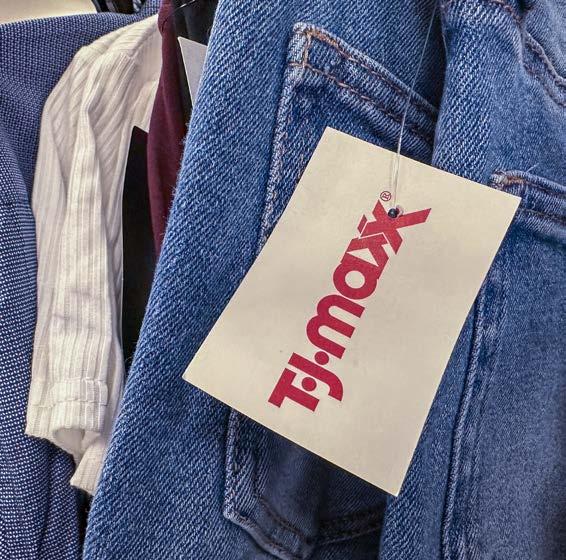
TJX Companies
Source: LSEG
its model helps reduce waste.
TJX should benefit from the better-than-usual inventory availability management is currently seeing in the marketplace, and the shares look cheap relative to their own history.
For the uninitiated, TJX is the leading ‘off-price’ purveyor of apparel and home fashions in the US and worldwide and has also expanded into stocking premium beauty products.
By staying true to its mission to ‘deliver great value to our customers every day’, the $137.6 billion cap has continued to grow sales and profits through many retail and economic cycles, and gained market share across an array of geographies, establishing one of the widest demographic reaches in retail in the process.
Trading under banners including TJ Maxx, Marshalls and HomeGoods in the US, but better known for its TK Maxx and Homesense fascias in Europe, the company is predominantly a physical retailer with over 5,100 stores around the world, although the Massachusettsheadquartered firm has also successfully
Source: Stockopedia
invested in its e-commerce capabilities.
While it already operates stores in nine countries on three continents, ambitious chief executive Ernie Herrman and his team see significant store growth opportunities both in the US and overseas.
TJX is geared into the global growth of ‘offprice’, a discount pricing format whereby a retailer purchases excess stock from known brands and sells it on to the end consumer at a lower price.
In Europe and the UK, local brand TK Maxx typically sells branded goods at a 60-65% discount, but it can go as low as 90%, encouraging consumers to indulge in a ‘treasure hunt’ format by scouring the store for bargains.
Bullish on the name, Jefferies believes TJX ‘should benefit from the secular migration toward the off-price sector, which, in our view, will likely lead to share gains from other, more traditional retailers’, and its analysts argue the expansion of the Home and International divisions ‘represent unique growth opportunities’ for the company.
TJX Companies has delivered an impressively high ROCE (return on capital employed), a key gauge of profitability, of roughly 30% in the past two financial years, and continues to return capital to shareholders via earnings-accretive buybacks and progressive dividends.
The retailer showcased its resilience once again with its first-quarter results (21 May), which revealed better-than-expected revenue and EPS (earnings per share) of $13.11 billion and $0.92
respectively and a 3% rise in same-store sales driven by rising customer transactions.
‘Our teams across the company delivered consumers exciting value on great brands and fashions and a treasure-hunt shopping experience, every day,’ commented the chief executive.
‘All divisions, both in the US and internationally, drove increases in comp sales and customer transactions, which underscores the strength of our value proposition. This also gives us confidence in our ability to gain market share across all of our geographies.’
While TJX’s second-quarter outlook proved softer-than-expected, this reflected tariff- and currency-related headwinds for which strong mitigation efforts are in place.
According to Stockopedia, the analyst consensus points to EPS of $4.50 for the year to January 2026, with a dividend of $1.70, rising to $5.00 in full-year 2027 with the $1.80 of dividends.
Based on these estimates, TJX shares currently trade on 27.4 times January 2026 earnings falling to 24.8 times 2027 numbers, compared with a mean of around 40 times cyclically-adjusted earnings over the past 30 years.
Therefore, a reversion to the mean, say over the next 18 months, driven by additional market share gains and forecast upgrades, implies a stock price of $200 based on the January 2027 estimate of $5.00 of earnings per share - more than 60% above where the shares currently trade - while even Jefferies’ $155 price target implies near-term upside of around 25%. [JC]
Loss to date: 10.5%
We highlighted sportswear giant Nike’s (NKE:NYSE) recovery potential at $79.43 in March, observing that the sneakers-tosoccer balls behemoth was in the early stages of a turnaround under new chief executive Elliot Hill, though we did also warn this transformation could prove more of a marathon than a sprint.
WHAT HAS HAPPENED SINCE WE SAID TO BUY?
Shortly after we recommended the stock, Nike warned fourth-quarter revenue would fall by a steeper-than-expected amount, then the shares gapped down in April after Donald Trump announced sweeping tariffs on nations including Vietnam, where the company makes over half its shoes.
Encouragingly, however, the shares rallied following the delivery of better-than-feared fourthquarter sales and earnings (26 June) to leave our Buy call 10.5% in the red, and the results suggest the trainers-tobasketballs business is over the worst and Hill’s turnaround initiatives are gaining traction.
Admittedly, Wall Street expectations were low coming into the print yet Nike still delivered forecastbeating revenue of $11.1 billion for the quarter ended 31 May 2025.
Source: LSEG
is taking steps to move its Chinese production elsewhere as Nike lifer Hill tackles the company’s problems head-on.
WHAT SHOULD INVESTORS DO NOW?

That was down 12% year-on-year but ahead of the $10.7 billion consensus estimate, while earnings per share of 14 cents topped the 13 cents analysts were predicting.
Nike quantified a $1 billion cost headwind from tariffs, with a meaningful chunk of its existing supply chain based in China, but the company
Patient investors who bought on our advice should hold on as the company appears to have reached an inflection point.
The Oregon-based behemoth expects sales and profit declines to moderate moving forward, is working down elevated inventory levels, especially within classic franchises, and wholesale partners are responding well with holiday order books up year-on-year.
Jefferies, which has a ‘Buy’ rating and $115 price target for Nike, notes its running products are ‘showing green shoots, and wholesale partnerships are being re-established (Amazon) and improved’.
The broker also stresses Nike’s valuation is its cheapest for 10 years and still sees ‘a V-shaped recovery in full-year 2027 as innovation resonates and margins rebound’. [JC]

3 CLOTH ST LONDON EC1A 7LD
Registration and coffee: 17.15
Presentations: 17.55
During the event and afterwards over drinks, investors will have the chance to:
• Discover new investment opportunities
• Get to know the companies better
• Talk with the company directors and other investors
A specialist alternative equity trust. Actively managed by Ken Wotton and the Gresham House UK equity team, it maintains a highly-concentrated portfolio of 15-25 high-quality, dynamic, UK smaller companies, each operating in a niche market offering structural growth opportunities.
ROME
A critical minerals exploration company active in the DRC. Its main project is Bisie North, a tin and copper deposit some 8km from the world’s highest-grade tin mine.
ARAM (SCOTCH CORNER)
A newly launched segment of the Aquis Stock Exchange, a dedicated marketplace for real estate and infrastructure investment, offering investors access to the world’s largest asset class through a fully regulated and liquid public market.
MANX FINANCIAL GROUP
The group along with its subsidiaries offers retail and commercial banking services, payment solutions, wealth management, general insurance, and life insurance.
By the Shares' team

As we move through the midway point of 2025, after a frankly dizzying six months when it has felt like the world has been running on fast forward, it is a good time to take stock. In this article the Shares team, drawing on expert opinion, looks to cut through the noise and judge where we sit now and the possible scenarios which could play out over the remainder of the year.
While it is important to have a sense of the market backdrop it’s equally important to remember these factors are entirely out of your
control as an investor. You need to focus on what you can control. If you don’t already have an investment plan then you should create one and write it down.
Determine your investment goals, the amount of risk you are prepared to take to achieve them and what time frame you are investing over. Once you’ve got your plan in place or, if you have one already, then you need to stick to it. Maintaining this discipline isn’t easy but it is crucial if you want to be successful as an investor.

monitored, and a thorough testing of previously unlikely scenarios is now obligatory.’
The key question in Ukraine is whether the war will continue to grind on in the way it has done for much of the three-and-a-bit years since Russia invaded or whether there is progress towards some sort of peace deal.
The two sides held face-to-face talks in Istanbul on 16 May and 2 June which resulted in prisoner exchanges. However, there is reportedly no date currently set for the next round of discussions and the ceasefire which Ukraine and its Western allies are pushing for has not showed any sign of materialising yet.
Israel’s surprise strikes on Iran which started in mid-June have led to an exchange of fire between the two sides and the conflict took a new and potentially significant twist with the intervention of the US in bombing Iranian nuclear facilities on 21 June.
The extent to which this set back Iran’s efforts to develop nuclear weapons is a matter of debate. However, a relatively modest military response from Iran to US involvement, launching a prewarned attack on an American base in Qatar, and a US-brokered ceasefire seem to have dialled down the temperature for now.
The two key market barometers for geopolitical risks are likely to be gold and oil. Gold’s traditional safe haven qualities look set to be in demand if either of these conflicts were to hot up.
Geopolitics has been to the fore in the first half of 2025 and there is little reason to think that won’t be the case for the remainder of the year too. The approach to foreign policy taken by the new US administration has prompted a big shift in European thinking and driven countries to unveil plans to ramp up their military budgets.
And, as we discuss elsewhere, tariffs have raised the prospect of a fully blown trade war, with China’s testy relationship with the US and the rest of the Western world and the thorny question of Taiwan bubbling away in the background.
There are otherwise two key flashpoints which are in particular focus right now. The war in Ukraine and the simmering conflict in the Middle East.
As Janus Henderson CEO Ali Dibadj says: ‘Geopolitical risk must be factored into investment decisions, new developments must be actively
Both also have a direct impact on energy markets. The key risk factor in the Middle East is if Iran were to make any attempt to obstruct the Strait of Hormuz, through which 20% of global oil and 20% of the world’s liquefied natural gas passes. Any threat to this waterway could quickly lead to a renewed surge in energy prices.
JPMorgan has signalled that in a worst-case scenario, where the production and supply of oil from the Persian Gulf is affected, crude could trade at $130 per barrel.
But if the ceasefire holds, then the weak fundamentals for the oil price, with an uncertain economic backdrop hitting demand and producers’ cartel OPEC+ ramping up supply, would once again dictate prices.
Equally, if some sort of peace is achieved in Ukraine then that would also potentially act as a drag on crude as Russian barrels return to the global market. [TS]

confirming their London agreement on rare earth and tech, while the White House said Trump’s trade deadlines in July could be extended.
Trump’s July 8/9th deadlines for restarting tariffs are ‘not critical’, White House press secretary Karoline Leavitt said. If that line holds it would remove one of the major risks for markets.
At the same time, the UK’s trade prospects have been lifted by securing a free trade agreement with India, establishing the US/UK Economic Prosperity Deal, and the new Strategic Partnership with the EU. ‘This moment of rapid change is a challenging context to undertake the types of forecasting found in the Global Trade Outlook, but it is also exactly the moment that calls for the far-sighted policy analysis it offers’, said the UK’s Department for Business & Trade in its June 2025 outlook.
Governments have been expanding tariffs, subsidies, and industrial policies since last year, reshaping trade flows and putting serious pressure on global supply chains. Such moves might provide short-term wins for populist politics but this ongoing realignment is contributing to increased uncertainty, which doesn’t make investing any easier.
‘Rising protectionism (policies favouring domestic industries through tariffs or restrictions), particularly in advanced economies, is triggering retaliatory measures (countermeasures from trading partners in response to trade restrictions) and adding trade barriers’, says the UN’s Trade & Development team, while also risking ‘competition distortion’ across multiple industries, like clean energy, technology and critical raw materials.
Yet recent trade noises offer hope for optimism, with talks between the US and China apparently
In a world of little certainty, what investors can expect through the rest of 2025 and beyond is that change will continue to reshape how businesses and nations interact, with trade corridors between likeminded nations likely to become increasingly valuable, according to consultancy McKinsey.
Its research predicts global trade will grow by around $12 trillion by 2035 in a baseline scenario, or roughly 35% to $45 trillion, but McKinsey stresses that other less encouraging scenarios could also play out, tilting global trade growth by $1 trillion higher or lower, and a worst case ‘fragmentation scenario’, in which geopolitically distant economies trade less, about $3 trillion of it could be lost.
For some time now economists, fund managers and other experts have been pondering whether president Trump was not quite the reactionary he often appears. The theory ran that the world’s
most powerful man would bang his stick loud and hard to make sure all major actors were paying attention, before slowly softening the White House’s stance to become more accommodating to trade partners. This seems to be shakily playing out.
Yet huge risks remain. From 9 July, countries without a bilateral trade deal with the US will face ‘Liberation Day’ tariffs which are much higher than the current baseline 10% level. Running parallel to this China has a truce running through to midAugust on much higher tariffs.
Ultimately, pressure is on for countries, particularly the EU, Korea, India and Japan, to secure agreements by 9 July. The European Union is planning to retaliate even if the US imposes only the 10% baseline levy on its goods. This implies a chance of re-escalation that would lead to further
uncertainty which the markets would not like.
Other questions are still to be answered, India for example. Trump wants the US to become less reliant on China for many goods and India is seen as a more favourable trading partner – Apple (AAPL:NASDAQ) is among the many large cap firms moving iPhone manufacturing from China to India, for example – but while India undoubtedly has the people power, does it have the infrastructure needed to pick up the manufacturing slack?
As things stand, markets seem to be assuming Trump extends these deadlines again, but that could be a misplaced sense of confidence. Countries in ‘productive’ talks could see the deadline extended, but that leaves many more who could face the US unilaterally setting a tariff rate. The EU negotiations are going to be key. [SF]
Donald Trump’s tariffs and geopolitical turbulence were defining factors for global markets in the first half of 2025, leaving investors fretting over a likely pullback in US economic growth as tariffs raise costs for American corporates and consumers alike. At the midpoint of 2025, the world’s biggest economy faces myriad uncertainties including the possibility Trump’s levies raise inflation and his ‘big beautiful’ tax and spending bill increases the federal debt.
Cracks have emerged in the US labour market, yet they haven’t widened enough to force the US Federal Reserve to cut rates. Indeed, the latest Summary of Economic Projections, also known as the ‘dot plot’, saw the median dot still pointing to 50 basis points of cuts by year-end, but seven officials now expect no cuts this year, up from four at the March meeting.
Julius Baer sees an ‘elevated risk of a recession looming on the horizon’, but its analysts stress any downturn would be unlikely to be long-lasting because the US economy is not plagued by major domestic imbalances.
Seema Shah, chief global strategist at Principal Asset Management, says trade tensions have undoubtedly taken a toll, with escalating tariff uncertainty delaying corporate investment, freezing hiring plans and weighing on both business and consumer sentiment.
‘And yet, despite this, the US economy has so far avoided recession, supported by the continued resilience of household and corporate balance sheets as well as the lingering momentum from a
strong first quarter,’ observes Shah.
Principal Asset Management’s base case remains for the US to ‘narrowly’ avoid recession as the economy navigates persistent policy uncertainty.
‘Encouragingly, this forecast was intact even before the US-China trade truce was announced in early May, as we assumed that the US administration would recognize the risks and back away from the economic ledge,’ adds Shah.
Many analysts have argued the Fed should focus on the full employment side of its mandate and restart rate cuts immediately. ‘Yet, with both large and small businesses indicating that they plan to hold onto their workers and ride out the tariff storm, only a modest weakening in the jobs market is likely, further reducing the urgency for Fed support,’ explains Shah, who expects the Fed to wait until Q4 before reducing policy rates.
Uncle Sam’s unpredictable politics have created
a ripple effect which is impacting trade and fiscal policies worldwide and the OECD recently reduced its global economic growth forecast to 2.9% for both 2025 and 2026, down from a 3.3% increase in 2024.
‘The global economy has shifted from a period of resilient growth and declining inflation to a more uncertain path,’ notes OECD Secretary-General Mathias Cormann. ‘Our latest economic outlook shows that today’s policy uncertainty is weakening trade and investment, diminishing consumer and business confidence and curbing growth prospects.’
Shane O’Neill, head of interest rates at Validus Risk Management, believes the UK is emblematic of the broader global story: ‘Inflation is easing, just not quickly enough; growth is cooling, but not conclusively; policymakers are threading a needle in choppy seas,’ says O’Neill. [JC]
Amid increased geopolitical tensions and an unresolved tariff situation, it is perhaps unsurprising the Federal Reserve left interest rates unchanged for the fourth time in a row on 18 June.
The decision maintains the central bank’s key lending rate at around 4.3% where it has resided for the last six months, despite calls from president Trump to lower interest rates.
The problem for the Fed is that inflation remains above its 2% target with May’s reading coming in at 2.4%. Prices could rise in the months ahead as tariffs take effect, although no such impacts have yet appeared, suggesting companies may have
absorbed them so far.
Fed chair Jerome Powell freely admits ‘that process is very hard to predict which is why we think the appropriate thing is to hold where we are,’ commented Powell at the press meeting following the rate decision.
The latest summary of economic projections, also released on 18 June, showed committee members believe inflation will average 3.1% in 2025, up from 2.7% in March, accompanied by a tenth of a percentage point rise in the unemployment rate to 4.5%.
The median projection for the fed funds rate
was held at 3.9% corresponding to a target range of 3.75% to 4%, implying a half a percentage point cut by year end.
According to the CME Fedwatch tool, futures prices imply a two thirds chance of a 25-basis point cut in September and a coinflip for another cut by year end.
Economists at Julius Baer believe the Fed is likely to move slowly given the potential for tariff-induced inflationary impacts and forecasts two 50-basispoint rate cuts in the second half of the year.
‘However, companies are adopting a wait-andsee approach, putting investment and hiring plans on hold until the dust settles, which is softening the US growth outlook,’ caveats the bank.
With the European Union cutting interest rates more aggressively that the US, the dollar might ordinarily be expected to benefit from a widening interest spread.
Similarly, the dollar usually strengthens when geopolitical tensions rise, so it is noteworthy the greenback recently dropped to a 44-month low against the euro.
Analysts at Morgan Stanley and Goldman Sachs said it was noteworthy that when markets sank on ‘Liberation Day’, the expected demand for US dollars was relatively muted, while demand for yen and the euro increased.
Some economists believe we are witnessing a major shift in capital flows as investors allocate away from the US, potentially putting the dollar’s
haven status into question.
Guneet Dhingra, head of interest rate strategy at BNP Paribas (BNP:EPA) said in an interview: ‘Our view at BNP is that there is definitely a fair bit of cross-border flow, particularly from the US to Europe.’
In summary, the market seems comfortable with the idea of further dollar weakness going into the second half.
Rising US debts and persistent budget deficits remain a focus for investors and were cited as key reasons supporting the decision by credit rating agency Moody’s (MCO:NYSE) to remove the US’s triple A rating.
The US budget deficit remains stubbornly high at 6.5% of GDP, one of the highest outside of recessions and world wars, while the labour market is close to full employment.
In 2024, for the first time in its history the US spent more servicing its debts, roughly $880 billion than it spent on the military ($850 billion). An increasing number of high-profile investors believe the situation is unsustainable.
For example, Doubleline Capital CEO Jeffrey Gundlack has warned of a ‘reckoning for US debt, which, he believes has become ‘untenable’ and may lead investors to move out of dollar-based assets.
Jamie Dimon, head of JPMorgan Chase (JPM:NYSE), has also warned the bond market will ‘crack’ if the government doesn’t get a grip on the deficit. [MG]

The healthcare sector has underperformed again this year. Year-to-date, the MSCI World Healthcare Index has trailed the broader market by 6.8%, and by 47% since the end of 2022. Its relative valuation is now at multi-year lows.
In over 30 years of following the sector, we cannot recall sentiment being more disconnected from fundamentals. Many investors perceive too many overhangs—mostly political and largely US-related. We think these concerns are overdone, especially when reviewed in a market-relative context, and that a positive reappraisal is likely. With some clouds now lifting, this could present a compelling opportunity.
First, the issue of Trump’s ‘Liberation Day’ tariffs, which are set to return on 9 July. There may be delays or new trade deals (so far only one with the UK), but investor complacency is unlikely to persist. Pharma has lagged in part due to fears of sectorspecific tariffs. However, the industry’s high margins and reliance on IP-linked royalties make it more resilient than most.
Second, drug pricing. U.S. net drug prices are undeniably higher than in other OECD nations. But Trump’s May Executive Order was vague and offered no actionable reform—just a call for the government to propose a plan. The initial deadline passed with no follow-up, and the U.S. government’s relatively small role in drug purchasing complicates implementation.
Third, new leadership at the Department of Health and Human Services (HHS) and the FDA has sparked concern. We believe these worries are overblown. While some appointees are atypical, we’ve seen reasonable actions so far. The FDA

continues to meet approval timelines and is focused on improving drug development. A newly convened HHS-led committee is discussing vaccinations sensibly and with continuity.
Fourth, funding for academic research. The NIH, the main federal biomedical research funder, disbursed $47bn in 2024. Under Trump, many grants have been cancelled, and a proposed 40% cut from 2026 looms in the ‘Big Beautiful Bill.’ Some institutions, like Harvard, have faced added restrictions. This raises concerns about future talent pipelines for pharma and biotech. However, a Federal court recently overturned the grant cancellations, and proposed NIH cuts must pass the Senate—long a defender of NIH funding.
In conclusion, healthcare is still operating largely as normal. While political risks exist, they don’t justify the sector’s deep underperformance. Long-term drivers—like ageing populations and innovation—remain intact. Investors should take another look. You won’t be disappointed with what you find.
www.bellevue-am.uk/uk-en/private
Bellevue Healthcare Trust PLC (the “Company”) is a UK investment trust premium listed on the London Stock Exchange and is a member of the Association of Investment Companies. As this Company may implement a gearing policy investors should be aware that the share price movement may be more volatile than movements in the price of the underlying investments.
Past performance is not a guide to future performance. The value of an investment and the income from it may fall as well as rise and is not guaranteed. An investor may not get back the original amount invested.
Media group burned bright but faded as it encountered structural and cyclical challenges
Specialist media group Future (FUTR) served up its latest disappointment in May, reporting a poor set of first-half results which it blamed on macroeconomic uncertainty.
The full-year outlook was also revised downward and the company now expects a low-single-digit decline in full-year 2025 organic revenue.
Year-to-date Future shares have fallen more than 20% to 749p which translates to a market valuation of £785 million. This is a far cry from its share price peak of nearly £40 and market cap of around £4.5 billion achieved in 2021, with the stock something of a market darling at that time.
So, what has gone wrong for the company, which owns a slew of well-known UK brands like price comparison website Go Compare and iconic magazine titles Marie Claire and TechRadar? And can its first-quarter update on 17 July arrest the decline by showing signs of improvement or at least stabilisation in its end markets?
Founded in 1985 by Chris Anderson, the FTSE 250 company is made up of two divisions – media and magazines.
The company’s media division generates revenue from digital advertising, affiliate revenue for products, rewards, price comparison and events. The magazine division includes revenue associated with digital or printed magazines or bookazines, from advertising to subscriptions to newstrade.
Under previous chief executive Zillah ByngThorne, who ran Future from 2014 to 2023, the business expanded rapidly, largely through M&A.
Just running through some of the highlights, the acquisition of TI Media in April 2020 for £140 million enabled the group to move into the home
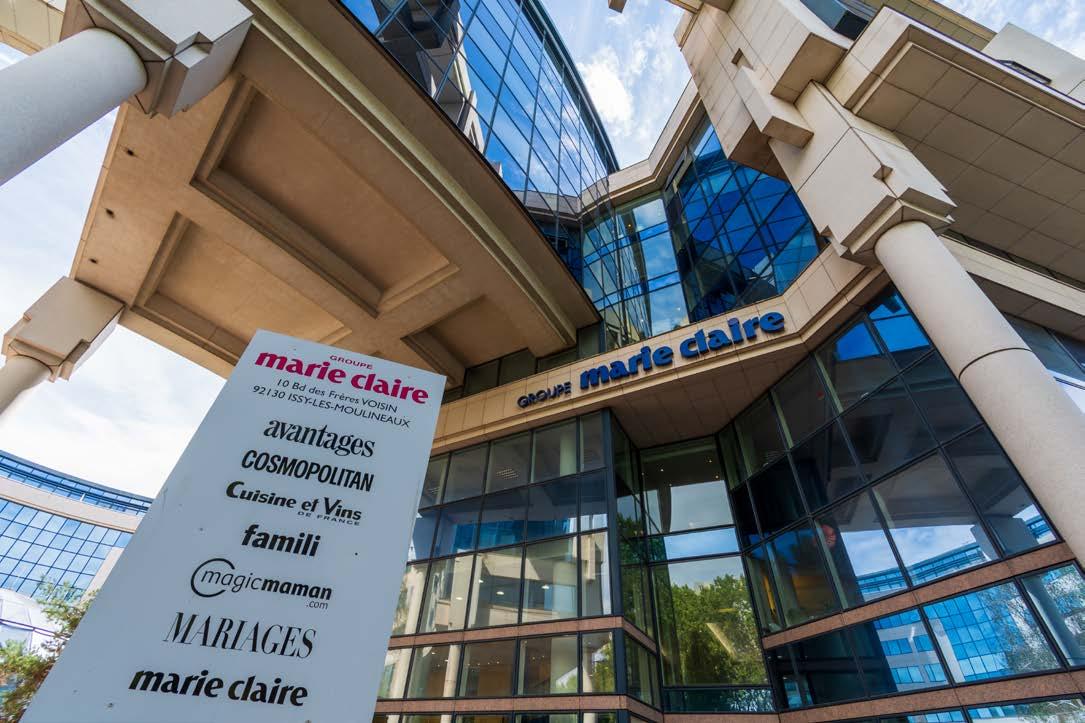
for Future's publishing business ex-Go Compare
EV/EBIT = enterprise value to earnings before interest and tax
Source: Panmure Liberum estimates
and women’s lifestyle segments with titles including Country Life and Women and Home.
In February 2021, Future branched out into the price comparison website field with the £594 million takeover of GoCo, the parent company of price comparison website Go Compare. It also acquired 12 magazine titles from Dennis Publishing in August 2021 for £300 million.
The approach was to focus on brands, covering topics from films to computer games and photography, which were and are a conduit between fans and their enthusiasm or hobby –often picking up these titles cheaply thanks to the structural pressures on traditional publishing. This helped drive a loyal and engaged audience which Future could monetise, employing a centralised platform to derive e-commerce, licensing and digital advertising revenue. The aim was to get readers to click through to partnered retailers and events.
Source: LSEG
The company has been badly impacted by a weaker outlook for global advertising spend as well as changes in the online media landscape, and it was clear new head Jon Steinberg had a challenging task ahead of him when he succeeded Byng-Thorne in April 2023.
Steinberg’s tenure was short-lived, leaving the company in October 2024 for family reasons. Despite making progress with Future’s growth acceleration strategy, his reign was clouded by the continued difficult backdrop.
Future’s websites are reliant on search engines as users navigate to them via the likes of Google.
Berenberg analysts observe: ‘With Google having made the decision to maintain third-party cookies in Chrome, the key overhang is the potential disruption to Future’s audience numbers as adoption of generative AI-grows (ChatGPT and Perplexity). To date, it appears there has been little disruption, with its audience down just 2% on an underlying basis in the first half of 2025.’

rein on budgets. One of the key drivers for the selloff which followed the first-half results was a big drop-off in US online advertising in March.
The FTSE 250 company has an extremely depressed valuation. Panmure Liberum estimates stripping out price comparison website Go Compare, Future’s publishing business is currently trading on a EV/ EBIT (enterprise value to earnings before interest and tax) ratio of just two times based on 2025 estimates, falling to 0.6 times for 2026.
In fact, the broker estimates the publishing arm is essentially on offer for free if GoCompare is valued using the average long-term valuation enjoyed by price comparison peer MONY Group (MONY), which owns Moneysupermarket.
The question for new chief executive Kevin Li Ying is will the specialist media group be able to adapt its business model fast enough to compete in this fast-changing market landscape? Investors remain sceptical, according to Berenberg analysts, hence the share price is still stuck in the mire.
Future has also been affected by weak consumer sentiment, meaning people are less likely to buy goods and services from its commercial partners, and prospective advertisers are maintaining a tight
The analysts suggest the true worth of Future’s media and magazine assets might be realised if GoCo is wholly or partially spun off. While a sale or spin-off could provide valuation transparency, it would require the separation and rebuilding of the support functions which have already been integrated into the group.
Also as with any sale or spin-off, it would take time to complete and would almost certainly reduce the profitability of the group in the short term.

By Sabuhi Gard Investment Writer



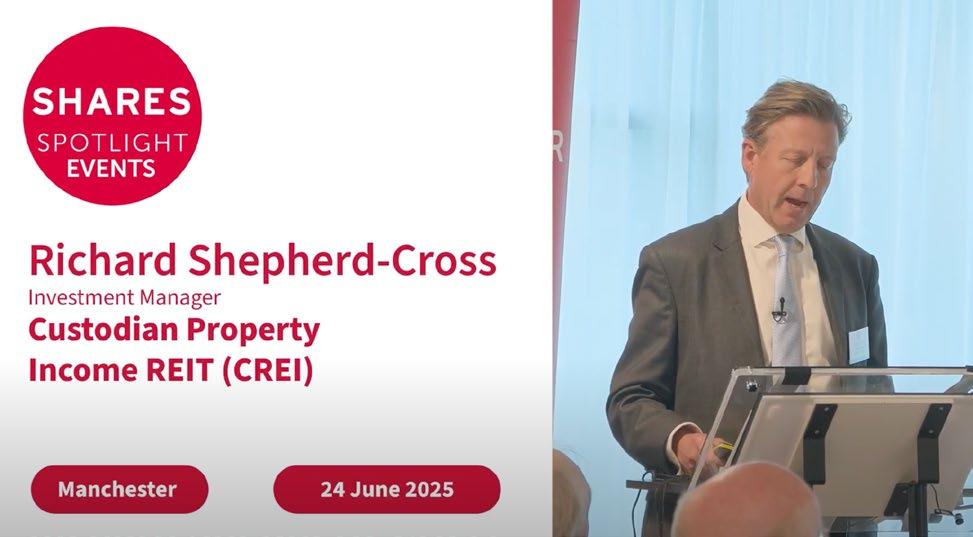

Visit the
website
Brunner Investment Trust (BUT)
Julian Bishop, Co-lead Portfolio Manager
Come rain or shine, the expertly managed Brunner Investment Trust aims to thrive in all market conditions. With a track record spanning more than five decades of increasing dividend payments, we’ve earned recognition as a dependable ‘dividend hero,’ steadfast in our commitment to long-term wealth creation.
Custodian Property Income REIT (CREI)
Richard Shepherd-Cross, Investment Manager
Custodian Property Income REIT aims to be the REIT of choice for private and institutional investors seeking high and stable dividends from well diversified UK real estate.
Poolbeg Pharma (POLB)
Jeremy Skillington, CEO & Ian O’Connell , Chief Financial Officer
A clinical-stage biopharmaceutical company focussed on the development of innovative medicines to address unmet medical needs. The Company’s clinical programmes target large addressable markets including, cancer immunotherapy-induced Cytokine Release Syndrome (“CRS”) and metabolic conditions such as obesity with the development of an oral encapsulated glucagon-like peptide GLP-1R agonist.

As ever, it has been a busy time for smallcap investors, with companies joining the market and companies leaving the market, either of their own accord – as in the case of sports data provider 4Gloabl (4GBL:AIM) – or because they have been acquired, as in the case of Downing Renewables & Infrastructure Trust (DORE), which was taken private by its largest shareholder.
It has also been a time of contrasting fortunes in terms of orders, with some firms scooping up more projects and some losing out, mostly due to declining business confidence against a backdrop of increasing geopolitical uncertainty.
We start this month with newcomer and ‘AI agent marketplace’ Sundae Bar (SBAR:AIM). The company moved from Aquis to the junior market after buying Ora Technology so technically it isn’t a new listing.
The London-based firm, which is developing a platform to provide tools for creating and monetising
AI agents, got off to a flying start with the shares trading at a 40% premium to their 8p listing price within days.
Thanks to strong retail interest, the firm placed more shares last week at 11p to fund a ‘bitcoin treasury’ which it said would ‘position it advantageously for the future while preserving capital flexibility and operational resilience’.
Also hitting the right note with investors was online instrument seller Gear4music (G4M:AIM), which raised its guidance for the year to March 2026 thanks to improving sales momentum and gross margins, sending its shares to a two-year high.
As well as posting a surge in earnings and a sharp reduction in debt for the year to March 2025, the firm has capitalised on the recent failure of two UK competitors by snapping up inventory at reduced prices and strengthening its market position.
It has also been a good month for cutting-edge companies such as AFC Energy (AFC:AIM), Light Science Technology (LST) and Synectics (SNX:AIM).
Source: LSEG
AFC, which is a leading producer of hydrogen power generation technology, revealed after an extensive value engineering exercise it had reduced the build cost of its 30kW (kilowatt) fuel cell generators by a massive 85%, well ahead of its target, which could drive the adoption of its technology to replace diesel generators at cost parity.

The firm also announced it had formed a global partnership with Volex (VLX) to drive costs down further through materials leverage and economies of scale, sending its shares to a new high for the year.
Light Science Technology, which has become something of a regular in these pages, for all the right reasons, announced it had won a new lighting contract and been awarded a patent for sensorGRO, its environmental sensor, which with further development could be used to monitor water and air pollution and carbon emissions.
Synectics, a leading player in security and surveillance systems, also celebrated the award of a new contract, worth $4.8 million, from a major client in South-East Asia, building on May’s systems integration contract win with UK travel operator Stagecoach.

It was a month to forget for firms such as data personalisation firm Eagle Eye Solutions (EYE:AIM) and human challenge clinical trials provider hVIVO (HVO:AIM) as both suffered the loss of a major contract.
Source: LSEG
Eagle Eye, which enables mass retailers to offer digitalised personal marketing to their customers, announced it had lost a major contract with a nationwide US grocer worth between £9 million and £10 million with effect from the start of August 2025.
The loss of the contract, which Eagle Eye said was high-margin, is expected to have a ‘material’ impact on the firm’s results for the year to June 2026, and the news sent the shares down 43% on the day.
It was a similar story for hVIVO, whose shares collapsed 46% on the revelation two human challenge trial contracts had been cancelled, one of which was ‘significant’, while another had been postponed due to ‘the current uncertainties in the pharmaceutical industry and the continued depressed biotech financing market,’ the firm said.
Meanwhile, small investors in electric vehicle charging company Pod Point (PODP) were finally put out of their misery after French utility giant and majority shareholder EDF Energy agreed to buy the rump of the company at 6.5p per share, a small premium to the underlying price but a far cry from the 225p IPO price back in 2021 and a cautionary tale of large-scale value destruction.

Disappointing the market with your maiden results isn’t ideal, but it seems to be on the increase among smaller companies.
Generative AI services provider GenIP (GNIP:AIM), which floated last October, posted a loss for the period from February to December 2024 as operating costs dwarfed revenue.
Sales of $123,000 were almost entirely offset by cost of sales of $108,000, after which running cots of $904,000 – including $359,00 of share-based payments to employees – sent the company to a substantial operating loss.
Chief executive Melissa Cruz insisted the firm had
made ‘strong progress’ and was ‘well-positioned for expansion and success,’ but the shares dropped 10% on news of the loss.
There was an even less positive reaction to the recent trading update from defence consultancy RC Fornax (RCFX:AIM), another relative newcomer.
Source: LSEG
Having debuted strongly in February and opened a new state-of-the-art headquarters in Bristol in April to scale its operations in line with what it called its growing project portfolio, the firm lowered expectations last month blaming delayed and reduced spending in the short term by its customers.
The stock fell 46% on the news, wiping out all its gains from the IPO, while chief operating officer and co-founder Daniel Clark found himself taking ‘a career break’.


By Ian Conway Deputy Editor
Find out how to make your cash go the furthest when travelling abroad
The summer holidays are fast approaching, and for millions of people, that will mean buying some euros, krona or lira and jetting off for a couple of weeks of sunshine. In the flurry of pre-departure activity, it’s easy to lose sight of getting hold of some travel money, and that can often leave you rushing to convert your pounds at the last minute, probably getting a poor deal into the bargain. The puzzling array of currency rates and conversion charges levied doesn’t help. Despite being a simple transaction conducted annually by millions of people, getting the best deal is surprisingly difficult. But there are some obvious pitfalls to avoid which can set you on the right track.

Probably the biggest faux pas you can make when buying foreign currency is to do so at the airport bureau de change, where currency rates are normally really poor. Somewhat bizarrely, if you order online in advance to pick up from the same kiosk, you’ll get a much better rate. The same principle applies to getting travel money from the Post Office, which is another popular choice. Individual outlets will usually have their own currency rates but if you order online beforehand,

you’ll be quids in. At my local branch I could convert £1 into €1.11, but if I ordered online for collection at the same branch I could get €1.14. On £1,000 exchanged, that’s an extra €30 to spend on holiday, just by planning ahead a bit.
You still need to be careful when ordering travel money online too. That’s because if you pay by credit card, you’re likely to pay a substantial ‘cash fee’ to your bank. We’re all probably used to this if withdrawing money from an ATM using a credit card, which is why no-one does it. But banks also often charge the same fee for ‘cash-like’ transactions, including buying holiday money.
It’s extremely cheeky, because your bank isn’t actually converting your money into cash in this instance, the currency exchange provider is. However, it’s clearly best to avoid these charges by sticking to using a debit card when ordering holiday cash online.
Another common pitfall to watch out for is using your standard debit or credit card while on holiday. Standard debit and credit cards often levy ‘non-sterling transaction fees’ on transactions in foreign currencies, normally in the region of 2.5% to 3% of the purchase amount. Some current accounts won’t charge this fee, but they will
usually come with monthly charges or minimum monthly deposits. If you already qualify for such accounts then you might avoid the fee, but you’ll still be subject to the bank’s currency conversion rate. The exchange rate you get from high street current accounts usually isn’t bad, but neither is it the best.
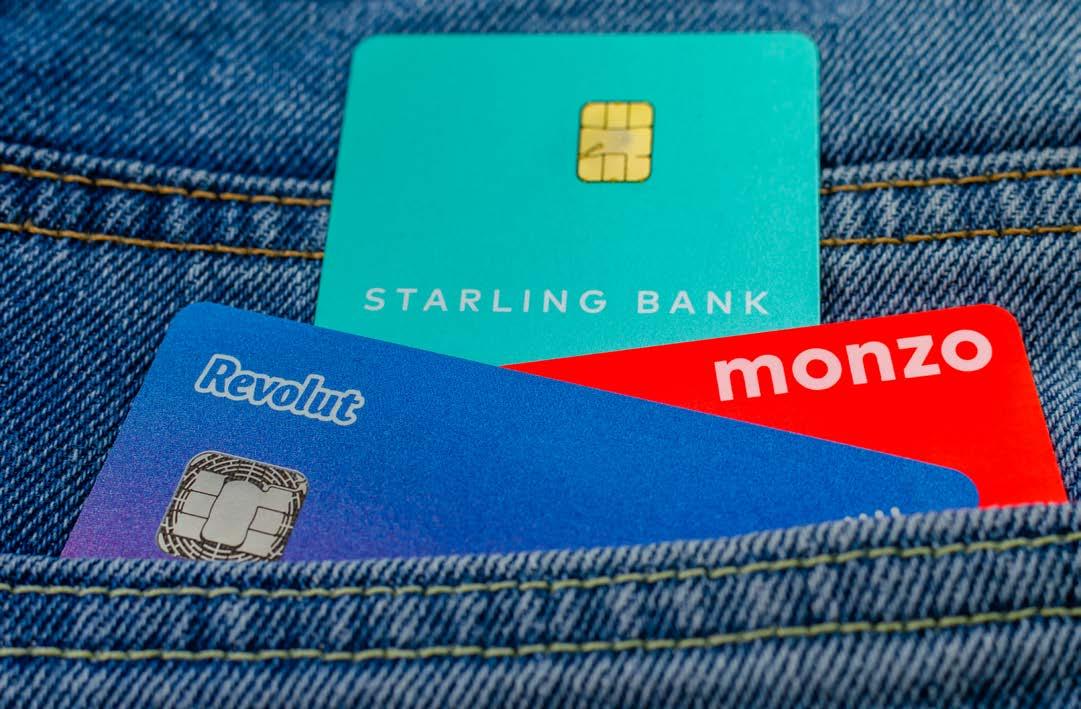
If you regularly need holiday money, it might be worth considering getting a pre-paid card from the likes of Wise or Revolut, or setting up a bank account with low or no currency transaction fees, such as those from Monzo or Starling. These more specialist accounts are easy to manage via mobile app and usually have very good exchange rates as well as low, or in some cases, no fees.
Some cards apply restrictions to how much you can use them so it’s worth doing your homework to find the one that suits you best. But once you’ve done this, you can then enjoy low currency fees and competitive rates on holiday every time you pay by card.
That is, unless you fall into our fourth pitfall. When you pay using your card overseas, you will normally be asked if you want to pay in the local currency or sterling. It’s massively tempting to hit sterling, but that could be a big mistake. By hitting ‘sterling’ on the card terminal, or the ATM if you’re withdrawing cash, you’re essentially handing over the conversion process to the provider behind the ATM or card terminal.
That will probably mean you get a poor exchange rate. By hitting the local currency option, for instance ‘euros’ in Spain, the currency conversion is executed by your own card provider, and if you’ve sniffed out a competitive account for
overseas transactions, then it will almost certainly mean you get a better exchange rate.

The final travel money pitfall to avoid is when you get back from holiday. If you have unused foreign currency notes, you might be tempted to change them back into sterling. Unfortunately, unless you have thought ahead, the rate you get probably won’t be pretty.
For example, the exchange rate provider eurochange will sell you €114.56 euros for £100, but if you bring all those euros back and exchange them again, you’ll only get £90.07 in return. That’s quite a hit.
Some travel money providers will offer you a buyback promise which guarantees they will buy currency back at the same rate they sold it to you. However, there will be a charge associated with this service and often limits on how much you can exchange. As an indication, Travelex charge £4.99 for their buyback promise, and will only buy back up to £250 of foreign currency. If you don’t return with any foreign currency, or only a little, that fixed charge does very little for you. It might be a better to buy some gifts at the airport or simply stash the money away for your next holiday.
Note: All exchange rates quoted as of 24th June 2025.

By Laith Khalaf AJ Bell Head of Investment Analysis

Tariffs, downgrades to earnings and economic forecasts and geopolitical conflict were the defining factors for markets in the first half of 2025. They’ve caused considerable uncertainty which has affected asset prices, as well as business and consumer confidence.
Investors could have made more than twice as much money investing in the UK stock market than in the US so far this year. The FTSE 100 has returned 8.9% including dividends, compared to just 4.3% from the S&P 500.
This will be unsettling for Donald Trump who in his first term as US president implied that stock market gains were a barometer for his success. Second time around for Trump, the US has lagged many other markets globally and many investors are now shunning the dollar and pulling money out of US stocks in favour of other locations including Europe.
Investors have grown concerned about a potential pullback in the pace of US economic growth as tariffs push up costs for US consumers and businesses. Trump wants individuals and companies in the US to stop buying from foreign sources and buy domestically, yet his trade policies are making life much more expensive for them.
The consensus earnings forecast for the S&P 500 has been cut by 4.9% so far this year as analysts price in a mixture of higher costs and lower demand. Companies are becoming more cautious in their earnings updates and investors don’t like what they’re hearing.
For example, electricals retailer Best Buy (BBY:NYSE) last month cut its profit outlook due to Trump’s tariff policies. Department store owner Target (TGT:NYSE) disappointed with its latest earnings update and slashed its forward guidance amid weaker consumer spending. Even companies that provide everyday items such as a bowl of cornflakes are finding life hard. Cereal giant WK

Data 1 Jan to 25 June 2025
Source: AJ Bell, ShareScope
Kellogg (KLG:NYSE) said in May that it might no longer be able to grow adjusted profits this year.
On top of this, four out of the Magnificent Seven group of mega cap tech stocks have delivered negative returns for investors so far in 2025. These seven companies effectively drove the US market higher in 2023 and 2024, so a reversal this year for Alphabet (GOOG:NASDAQ), Amazon (AMZN:NASDAQ), Apple (AAPL:NASDAQ) and Tesla (TSLA:NASDAQ) is significant as they’re dragging the market down.
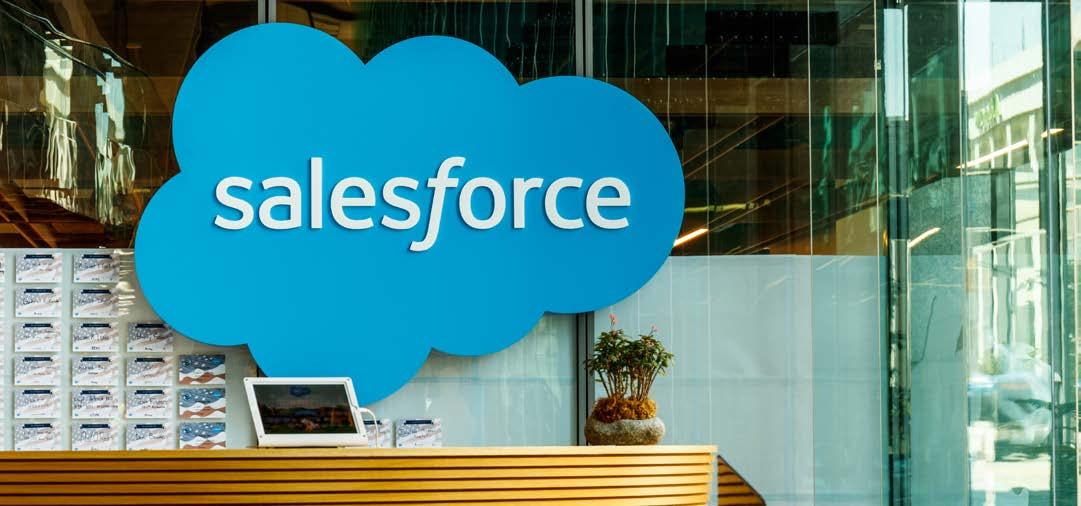
Data 1 Jan to 25 June 2025 (total return)
Source: AJ Bell,

The World Bank this month cut 0.9 percentage points off its GDP forecast for the US in 2025, now expecting just 1.4% growth which is half last year’s level.
Other factors have also weighed on investor sentiment, including the US losing its triple-A credit rating following a downgrade in May by credit ratings agency Moody’s, and a ballooning debt position for the country. US equity valuations also remain high with the S&P 500 on approximately 22 times next 12 months’ forecast earnings – not far off the 23.1-times peak seen in 2020.
Put all these negative factors in the mix and it’s easy to see why investor appetite for all things US has waned. People are instead looking elsewhere in the world for opportunities and cheaper valuations in Europe have acted as a magnet for investors.
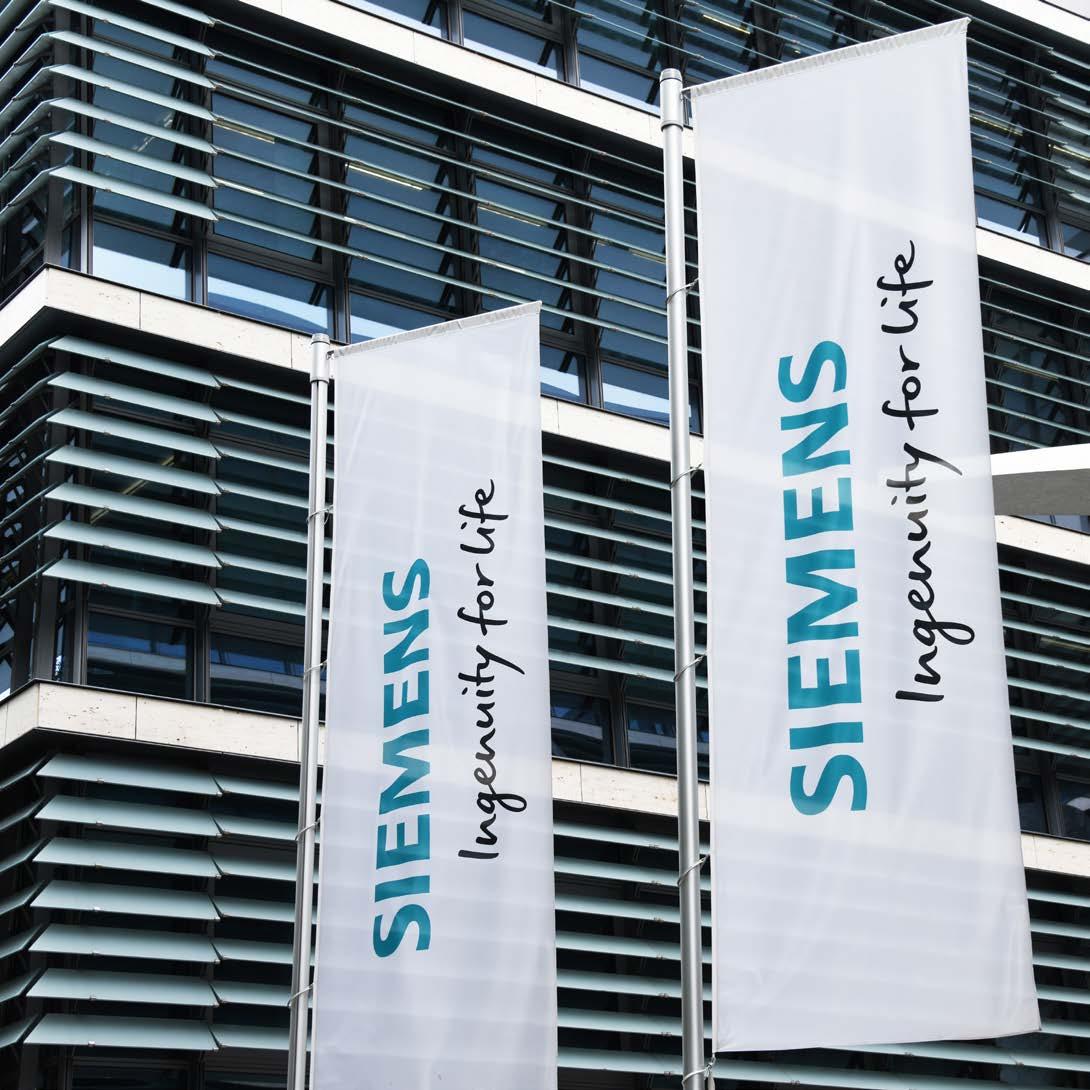
Germany has stood out from the crowd because of its decision to ramp up spending on defence and infrastructure. This pledge to spend big provides a tailwind for many companies in the Dax index including defence contractors, construction groups and energy providers.
Germany has offered a bounty of good news in a market environment plagued by uncertainty. German shares have been cheap for a long time and investors finally had a catalyst to fish


Data 1 Jan to 25 June 2025
Source: AJ Bell, ShareScope
for opportunities.
The DAX has been a star performer this year, yet it is no longer the bargain it was six months ago. At approximately 15 times next 12 months’ forecast earnings, the German index is now trading at a four-year high valuation. Historically, the market has traded more in the region of 11 to 13-times earnings.
The UK’s cheap valuation relative to the US has also worked in its favour as investors begin to reposition portfolios.
The FTSE 100 is full of the type of stocks that appeal to investors when there is uncertainty in the world. Investors seek companies with defensive qualities and the UK market has them in spades. Industries including tobacco and telecoms should have steady earnings regardless of what’s going on in the world.
The UK stock market has wealth of defence contractors which have attracted investor interest against a backdrop of increased government
spending on areas like cybersecurity and military forces. The wide range of banks and insurers have also been on investors’ shopping lists thanks to generous dividends.
Gold hit new record highs in April and investors were hungry for precious metal miners such as Fresnillo (FRES) which has generated a sparkling 132% return for investors this year.
The UK stock market has re-rated in the same way as the DAX, yet unlike Germany it is still cheap compared to history. It is currently trading on 12.5 times next 12 months’ forecast earnings, much higher than the 8.7-times rating seen in 2022 but well below the 14 to 16-times range it enjoyed between 2015 and 2018.
It means the UK still stands out when investors are looking for value opportunities in the wake of Trump’s tariff chaos. It also helps that the UK has already got a trade agreement in the bag with the US, further enhancing the country’s attraction to domestic and foreign investors.
Ask Rachel: Your retirement questions answered

If so, is there a limit and what are the tax implications?
I have a GIA (general investment account), currently valued at around £170,000. I’m looking at how best to preserve this investment in the most tax efficient manner.
I would like to transfer from the GIA into a SIPP. However, I realise any gains over the £3,000 CGT allowance will be taxed at 18% as a basic rate taxpayer. Do I have to sell the current shares from my GIA and then repurchase in a SIPP, or can this be done automatically similar to a ‘Bed & ISA’?
Is it possible to transfer some of the investments in this fashion into my SIPP within the £60,000 maximum annual limit? Can I then use the carry forward allowance for the previous years for my unused pension contribution allowance, to recoup 20% tax relief from HMRC on the money I transfer using this method?
How easy is it to do this? Is it automated or do I need to declare the transfer myself to HMRC to claim back the 20% tax?
Jonathan

Rachel Vahey, AJ Bell Head of Public Policy, says:
A frequently-asked question regarding the accumulation of assets in various tax wrappers is how these assets can be moved between different wrappers.
Pensions are extremely tax-efficient. Not only do individuals get tax relief on the contributions they pay into pensions, but the pension investment is mainly tax-free, making it easier for people to build up a retirement pot. Therefore, it’s natural you want to explore making the most of these tax advantages. When thinking about moving assets, it’s easy to get confused between ‘transferring’ and
‘contributing’. Simply put, transferring is when you move assets between two wrappers of the same type without realising them. For example, when you transfer ‘in specie’ from one pension scheme to another pension scheme without selling the assets. Contributing is when you pay cash into a pension scheme from your own funds.
The bad news is, you can’t do a straight ‘in specie’ contribution of assets from a general investment (dealing) account into a pension. HMRC looks harshly on this practice.
If you want to move your general investment account assets into a pension wrapper, you have to sell them, realise the cash and buy the asset in the pension. However, the good news is there are a couple of ways to do this.
First, many providers offer a ‘bed and SIPP’ approach. This is when you sell the general investment account’s asset and then treat the proceeds of the sale as an individual contribution into the pension. This process can be accomplished over a couple of days, reducing the amount of time you remain ‘out of the market’.
This means in all likelihood there will be a capital gain (or loss), and you may have to pay CGT (capital gains tax) on that amount. Everyone has a CGT annual allowance of £3,000 to offset against any gain, and you will pay CGT on any excess at 18% if you are a basic-rate taxpayer or 24% if you are a higher-rate taxpayer.
The second way to move assets into a pension is to sell the asset and for the pension scheme to immediately buy it from you. For this to work you need to have the available cash in the pension to immediately buy the asset.

So, if the value of the shares you sell is £10,000, the pension needs to have £10,000 in cash. The deal must be done at ‘arms’ length’, by which I mean there can’t be any special conditions attached, such as a cheaper price.
Again, there could be CGT to pay, but the advantage to this second method is you don’t spend any time ‘out of market’, meaning you can better protect the value of your investment.
Whether you pay a contribution as a result of the sale of the asset, or you pay a contribution to the SIPP ahead of the sale to allow it to buy the asset, you need to have one eye on the maximum contributions you can pay into pensions.
As a brief reminder, an individual can contribute to their pension the higher of £3,600 or 100% of their relevant UK earnings, including tax relief.
On top of this, there is the standard annual allowance of £60,000, which includes any personal contributions, employer contributions and tax relief. (This could be lower if someone is a very high earner or has previously ‘flexibly accessed’ their
benefits, usually by taking taxed withdrawals from their flexi-access income drawdown plan, which is called the Money Purchase Annual Allowance.) It may be possible to boost the annual allowance above £60,000 by carrying forward any unused annual allowance from the previous three tax years (unless the MPAA has been triggered). But remember, the contribution is still subject to the first rule of not exceeding the individual’s personal earnings.
Send an email to askrachel@ajbell.co.uk with the words ‘Retirement question’ in the subject line. We’ll do our best to respond in a future edition of Shares Please note, we only provide information and we do not provide financial advice. If you’re unsure please consult a suitably qualified financial adviser. We cannot comment on individual investment portfolios.













EDITOR: Tom Sieber @SharesMagTom
DEPUTY EDITOR: Ian Conway @SharesMagIan
NEWS EDITOR: Steven Frazer @SharesMagSteve
FUNDS AND INVESTMENT
TRUSTS EDITOR: James Crux @SharesMagJames
EDUCATION EDITOR: Martin Gamble @Chilligg
INVESTMENT WRITER: Sabuhi Gard @sharesmagsabuhi
CONTRIBUTORS:
Dan Coatsworth
Danni Hewson
Laith Khalaf
Russ Mould
Laura Suter
Rachel Vahey
Hannah Williford
Shares magazine is published weekly every Thursday (50 times per year) by AJ Bell Media Limited, 49 Southwark Bridge Road, London, SE1 9HH. Company Registration No: 3733852.
All Shares material is copyright. Reproduction in whole or part is not permitted without written permission from the editor.
Shares publishes information and ideas which are of interest to investors. It does not provide advice in relation to investments or any other financial matters. Comments published in Shares must not be relied upon by readers when they make their investment decisions. Investors who require advice should consult a properly qualified independent adviser. Shares, its staff and AJ Bell Media Limited do not, under any circumstances, accept liability for losses suffered by readers as a result of their investment decisions.
Members of staff of Shares may hold shares in companies mentioned in the magazine. This could create a conflict of interests. Where such a conflict exists it will be disclosed. Shares adheres to a strict code of conduct for reporters, as set out below.
1. In keeping with the existing practice, reporters who intend to write about any securities, derivatives or positions with spread betting organisations that they have an interest in should first clear their writing with the editor. If the editor agrees that the
reporter can write about the interest, it should be disclosed to readers at the end of the story. Holdings by third parties including families, trusts, selfselect pension funds, self select ISAs and PEPs and nominee accounts are included in such interests.
2. Reporters will inform the editor on any occasion that they transact shares, derivatives or spread betting positions. This will overcome situations when the interests they are considering might conflict with reports by other writers in the magazine. This notification should be confirmed by e-mail.
3. Reporters are required to hold a full personal interest register. The whereabouts of this register should be revealed to the editor.
4. A reporter should not have made a transaction of shares, derivatives or spread betting positions for 30 days before the publication of an article that mentions such interest. Reporters who have an interest in a company they have written about should not transact the shares within 30 days after the on-sale date of the magazine.